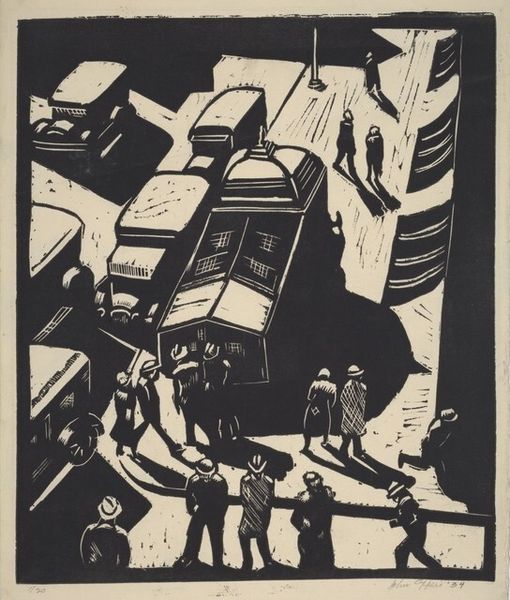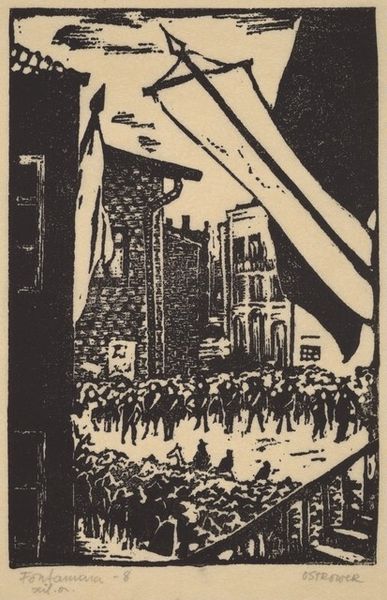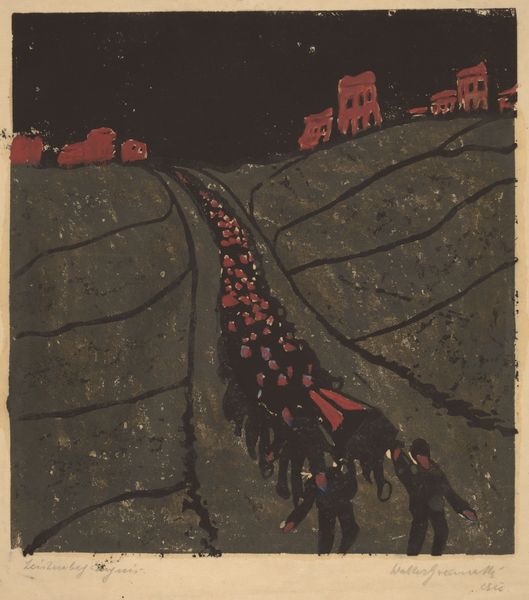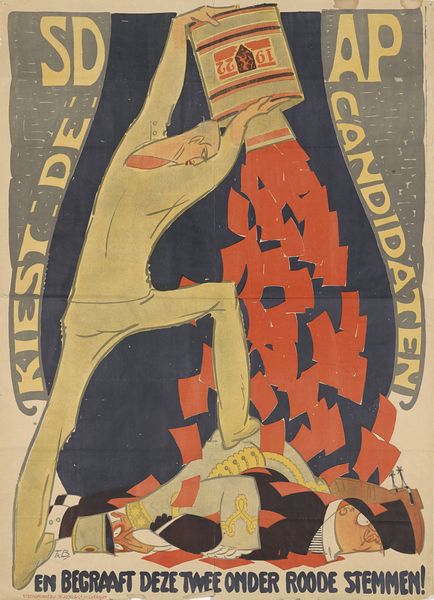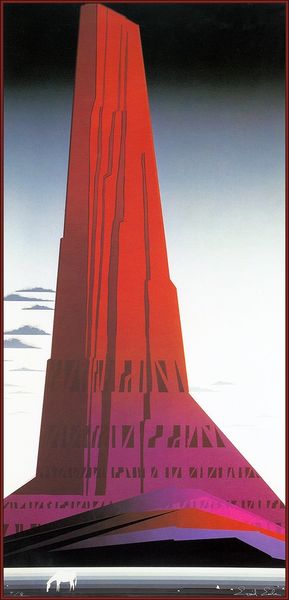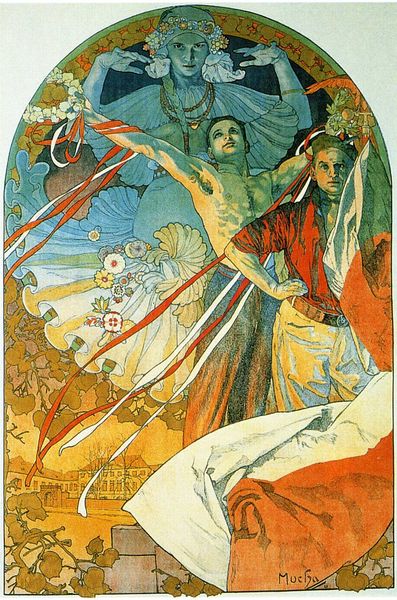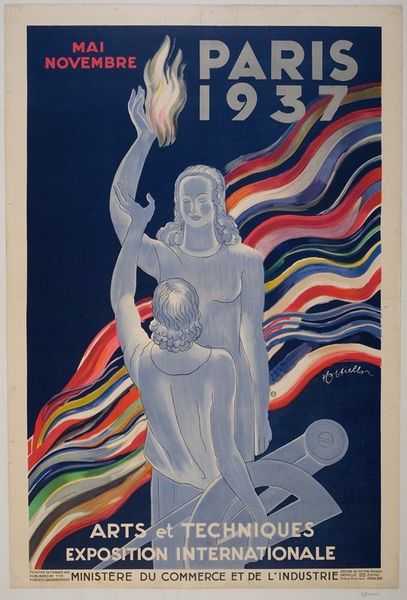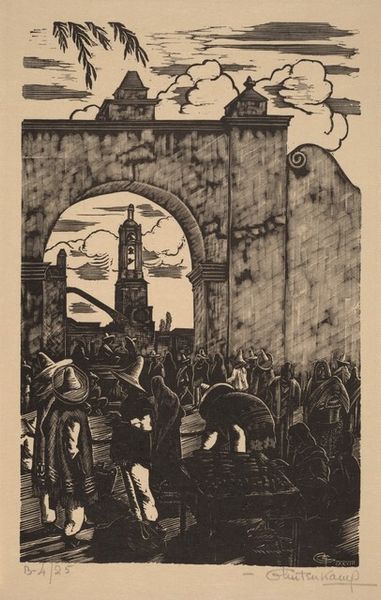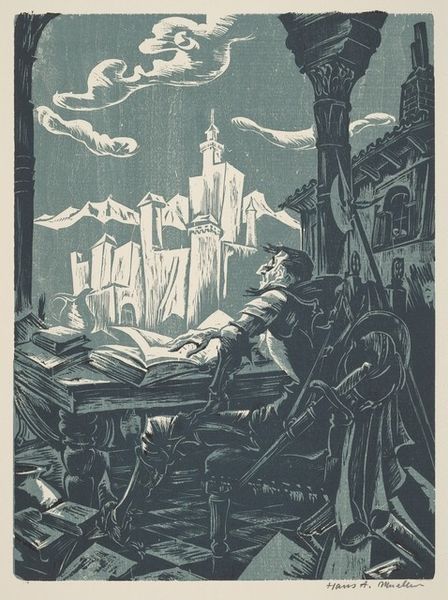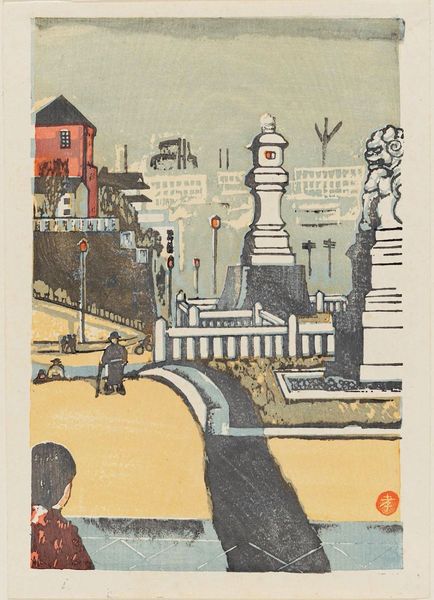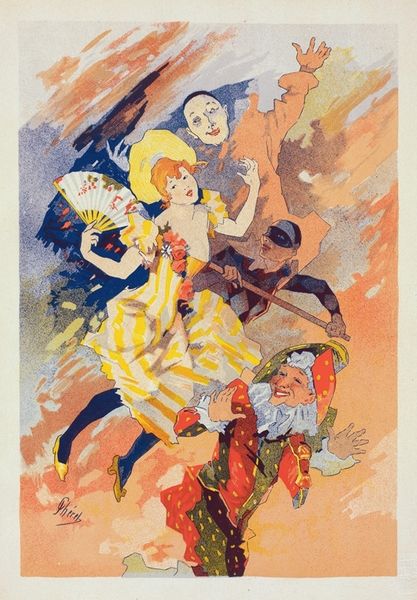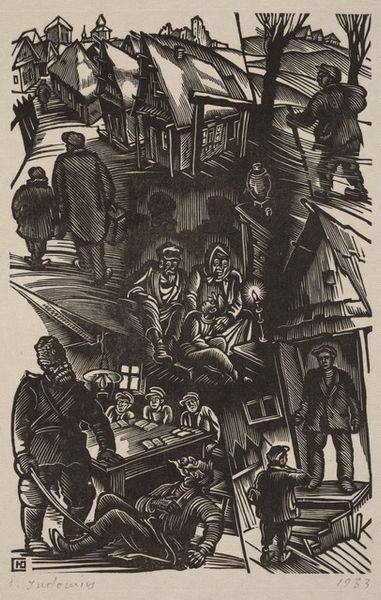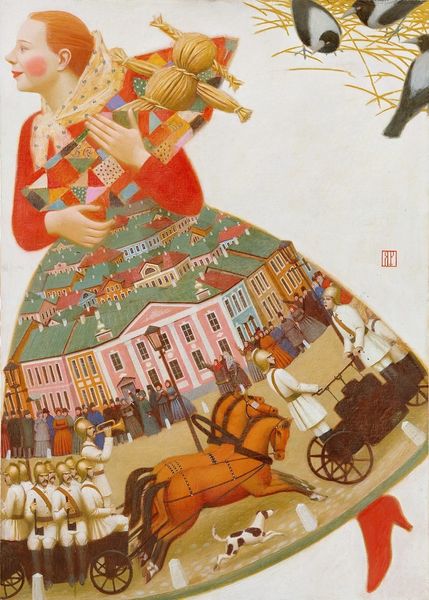
print, poster
# print
#
caricature
#
caricature
#
soviet-nonconformist-art
#
social-realism
#
cartoon
#
cityscape
#
poster
Copyright: National Gallery of Art: CC0 1.0
Curator: This is Ivan Vasilevich Batechko's "Kiev Festival," a print from 1963. Editor: It feels immediately celebratory, doesn't it? The festive lights and fireworks suggest a collective joy, but there’s something...muted about the palette, a constrained exuberance. Curator: Indeed. The social realism style, common at the time, served a propagandistic purpose. But within the constraints, artists could hint at the complexities of Soviet life. Consider the towering presence of Lenin, the city as a modern promise against the background of the red sky. Editor: And how interesting that the Lenin statue dominates the entire scene, standing over the red flags waving from the left. Even more interesting, that at first sight they seem as though the sky itself is red, full of Soviet symbols. Is this representation reinforcing a collective identity or just political demonstration? The people gathering seem blurred and almost generic, anonymous within the bigger picture. Curator: Batechko creates a tension between the individual and the collective. You’re right—the figures are not individualized, but they represent the ideal Soviet citizen, content and united in celebration of a shared ideology. Consider it also in terms of the legacy of Futurism. Editor: A complicated kind of idealism, with that touch of red, certainly. But is there any room to read this “shared ideology” ironically, too? Or did Soviet audiences really receive these images straightforwardly? Curator: Ambivalence was always present. It’s about situating the work in the context of a controlled artistic environment, understanding the limited options for dissent, but also appreciating the visual vocabulary of that era. We must keep in mind the function of art as propaganda. This particular piece offers such striking symbols of community under socialism: it shows us an instance where it appears attractive, but from the modern vantage, that veneer reveals more questions than answers. Editor: It's a good point. As for me, looking closer, I’m most struck by how potent those symbols of power are and remain; regardless of the fact that the building and people around that icon are long gone or look quite different by now, it stands there still today. Curator: Indeed. Its continued visual resonance underscores the complex layers of meaning embedded within this print.
Comments
No comments
Be the first to comment and join the conversation on the ultimate creative platform.
